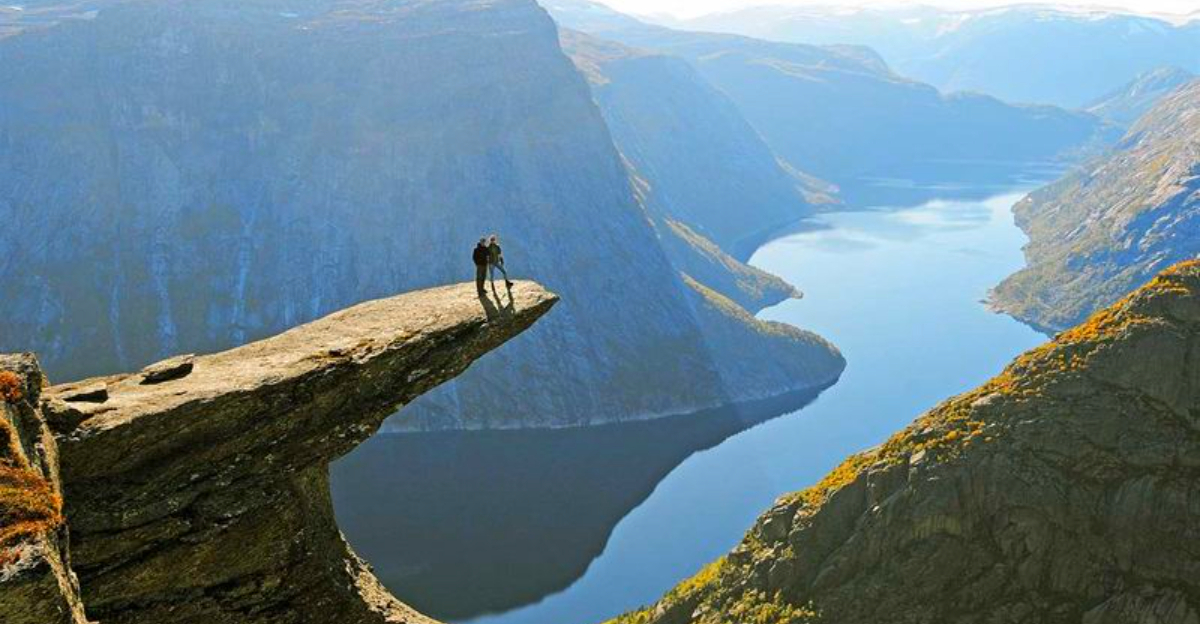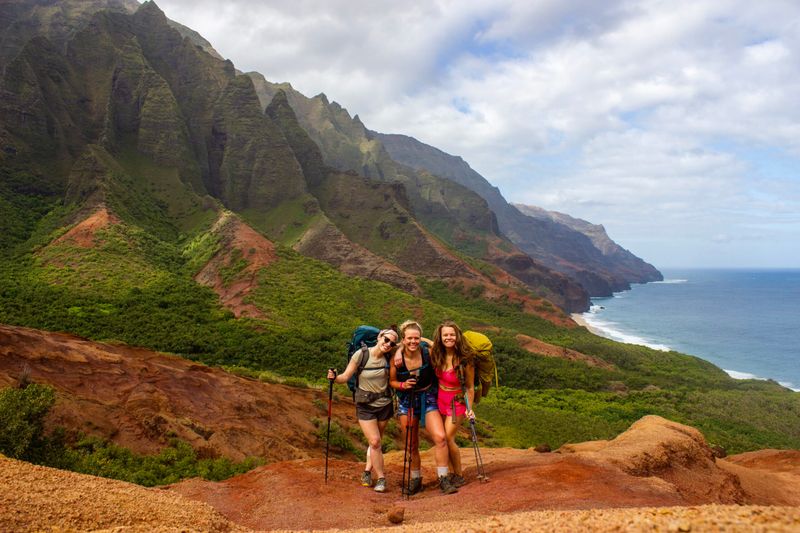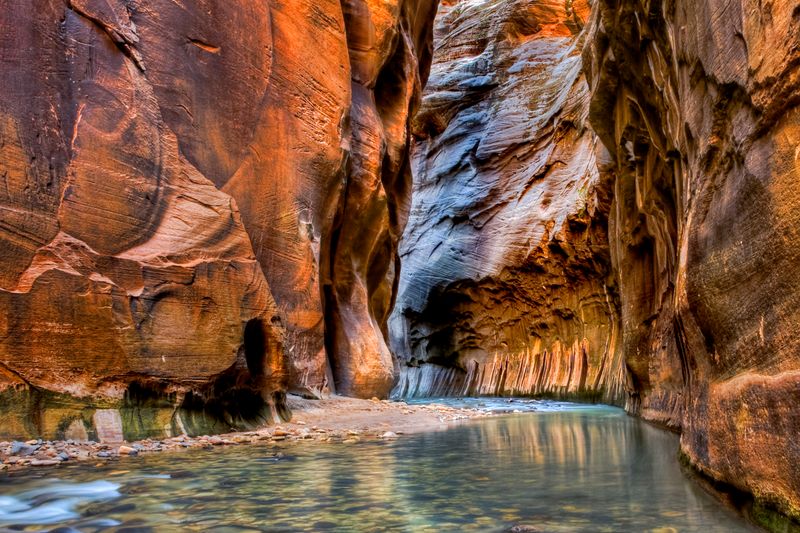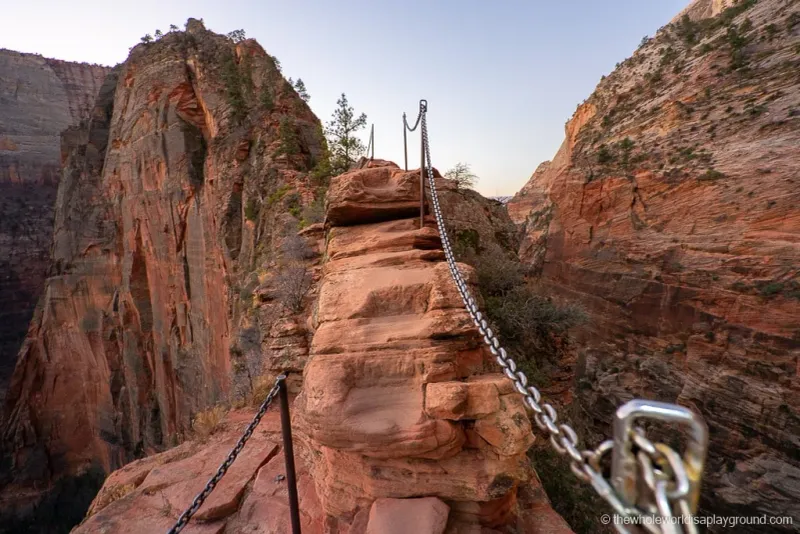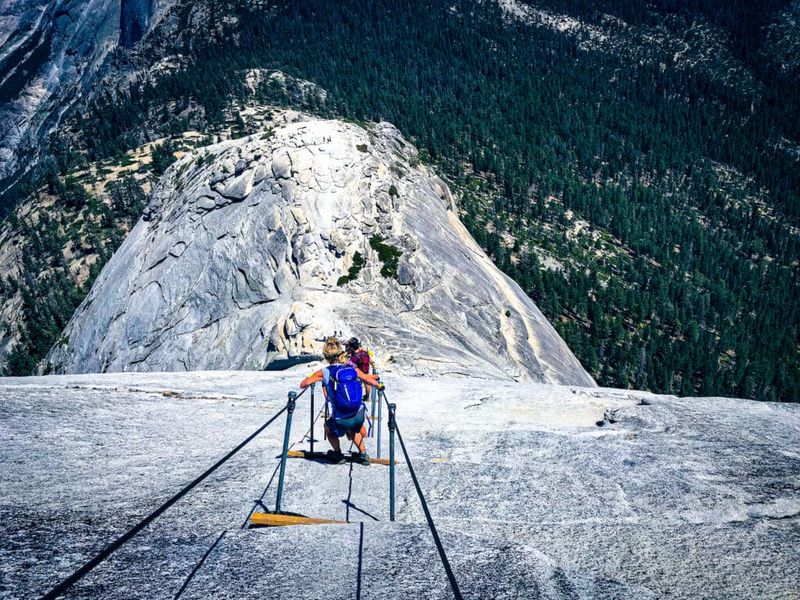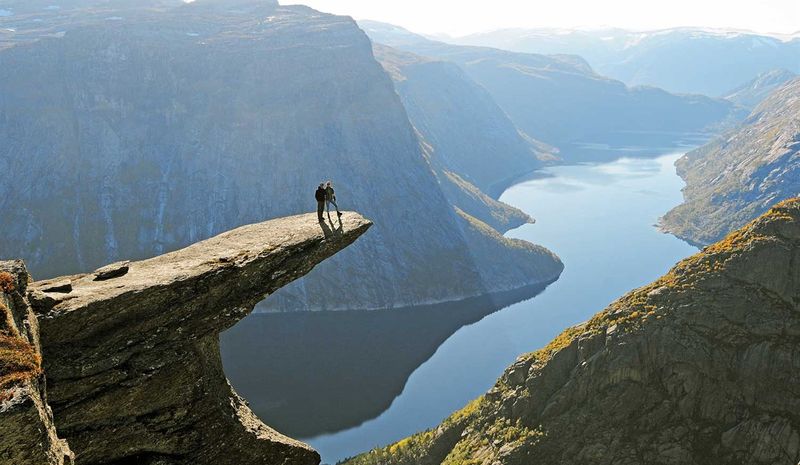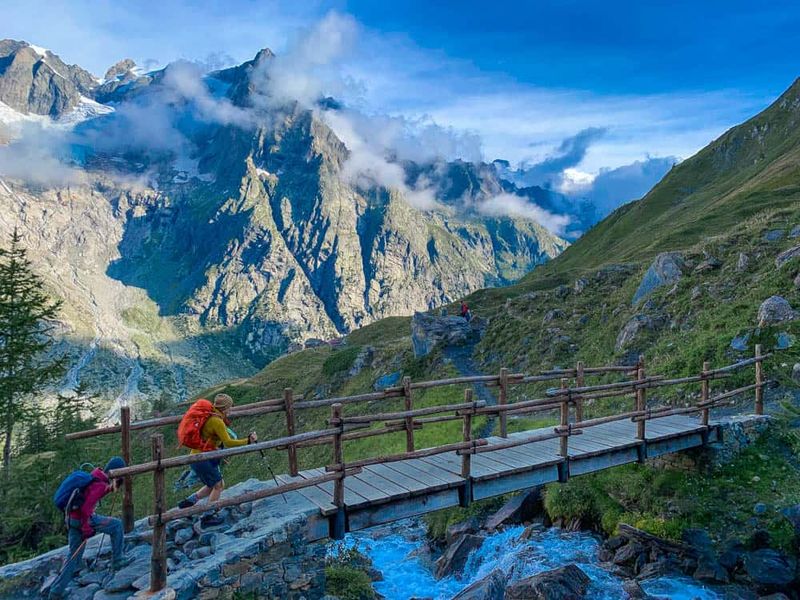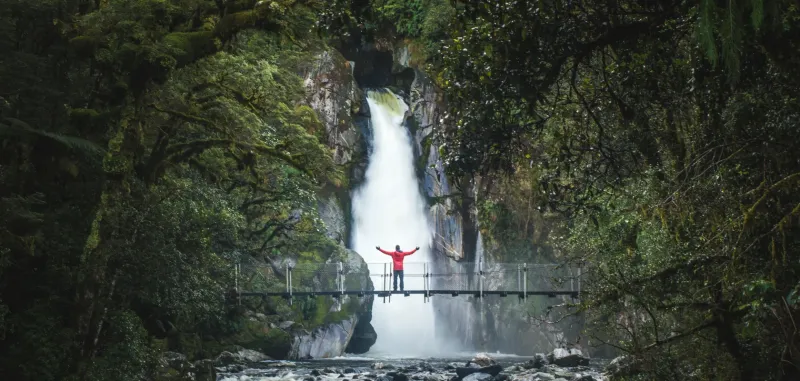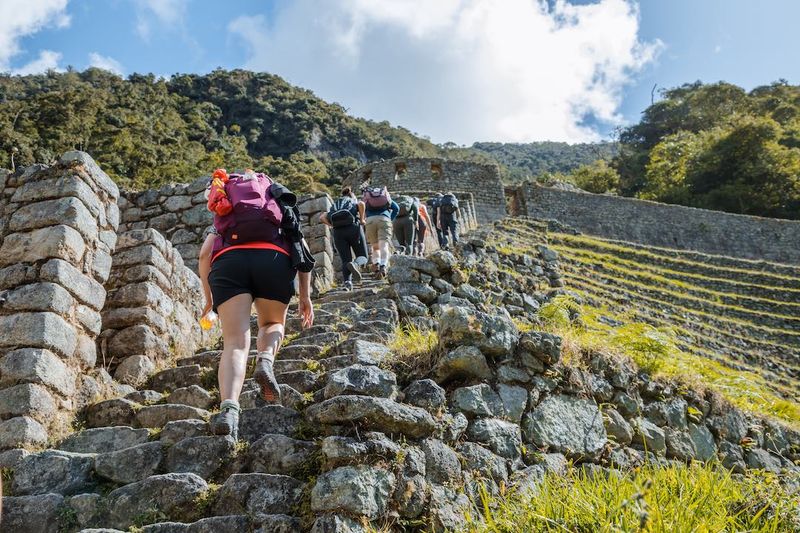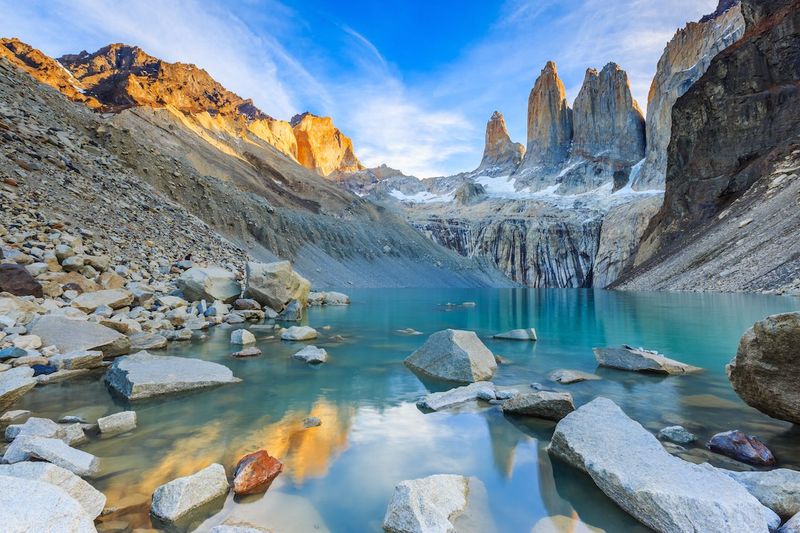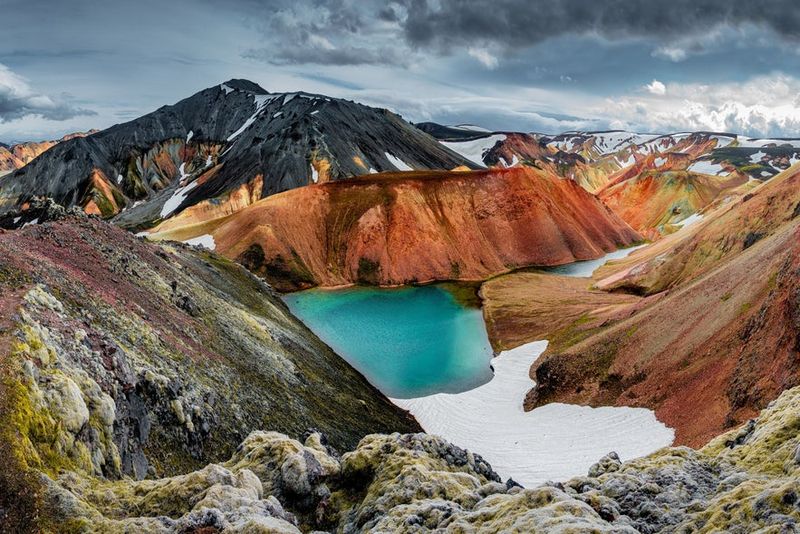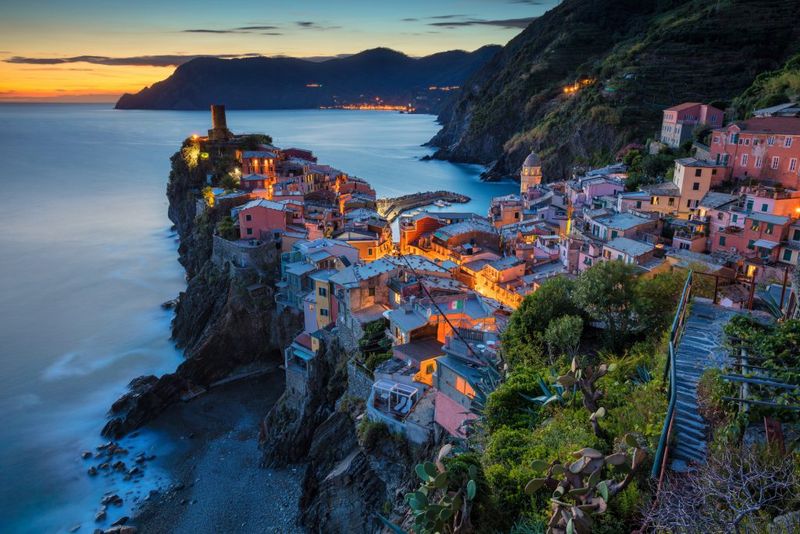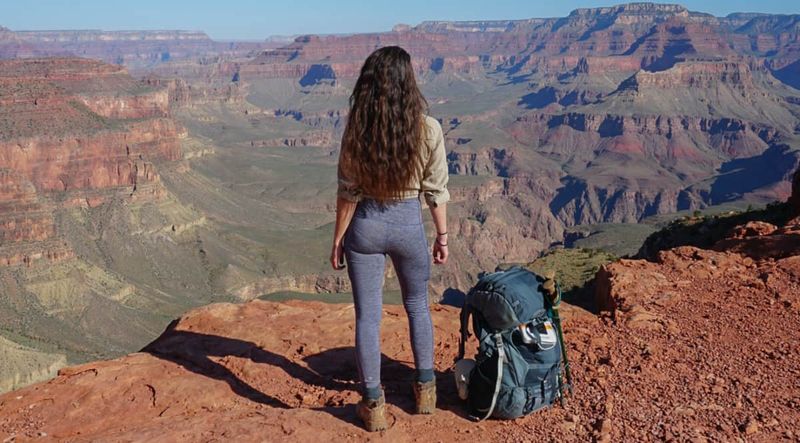Every year, millions of adventurers lace up their boots and head into the wilderness, searching for that perfect trail that takes their breath away. Some hikes reward you with jaw-dropping views, while others challenge you with steep climbs and rugged terrain. Whether you’re dreaming of walking along dramatic coastal cliffs, crossing ancient Inca paths, or standing on top of a granite dome, the world is full of incredible trails waiting to be explored—and knowing how to tackle them safely makes all the difference.
1. Kalalau Trail, Kauaʻi (Hawaiʻi, USA)
Walking along towering sea cliffs with waves crashing hundreds of feet below and lush valleys stretching as far as you can see is exactly what awaits on the Kalalau Trail, one of Hawaii’s most legendary coastal hikes. The Nā Pali Coast scenery is so stunning that every twist and turn feels like stepping into a postcard.
This 22-mile round-trip adventure requires permits if you plan to go past Hanakāpīʻai Valley, and camping is only allowed at designated spots like Hanakoa or Kalalau Beach. If you’re short on time, the first two miles to Hanakāpīʻai Beach make a fantastic day hike. Just be prepared for muddy, narrow sections and stream crossings that can swell quickly after rain.
Bring plenty of water, sturdy shoes with good grip, and double-check weather forecasts before heading out. The trail can be slippery and exposed, so respect the terrain and pace yourself for an unforgettable Hawaiian adventure.
2. The Narrows, Zion National Park (Utah, USA)
Most trails keep your feet dry, but The Narrows flips that idea on its head—you’ll spend your entire hike splashing through the Virgin River. Sandstone walls soar a thousand feet above you, creating a narrow corridor that feels almost otherworldly. Sunlight filters down in golden beams, lighting up the rust-colored rock in ways that make you stop and stare.
You can choose a bottom-up day hike starting from the Temple of Sinawava, or tackle the longer top-down route that requires a permit and shuttle logistics. Water levels change with the seasons and weather, so always check current flow conditions and flash flood forecasts before you go. Cold water means you’ll want neoprene socks or water shoes, plus a walking stick for balance on slippery rocks.
Pack your gear in a waterproof bag and be ready for an adventure that’s equal parts hike and wade. It’s wet, it’s wild, and it’s absolutely worth it.
3. Angels Landing, Zion National Park (Utah, USA)
Not everyone has the nerves for a trail where one wrong step could mean a very long fall. Angels Landing is famous for its final half-mile scramble along a knife-edge ridge, where metal chains bolted into the rock are your best friends. The views from the top? Absolutely epic—Zion Canyon spreads out below in layers of red, orange, and cream-colored cliffs.
Getting to the summit now requires a permit year-round, thanks to a pilot program designed to manage crowds and improve safety. You’ll need to enter a lottery through Recreation.gov, so plan ahead and don’t wait until the last minute. The hike itself covers about five miles round-trip with plenty of switchbacks and elevation gain before you even reach the scary part.
If heights aren’t your thing, Scout Lookout offers incredible views without the exposure. But if you’re up for the challenge, clip onto those chains, take your time, and savor one of America’s most thrilling summit experiences.
4. Half Dome, Yosemite National Park (California, USA)
Yosemite’s Half Dome isn’t just a hike—it’s a rite of passage for adventurous souls who crave a challenge. The final 400 feet to the top require pulling yourself up steel cables on a smooth granite face that’s steep enough to make your heart race. Once you’re standing on that rounded summit, the 360-degree views of Yosemite Valley and the High Sierra are nothing short of legendary.
Permits are mandatory and distributed through a lottery system on Recreation.gov, with both preseason and daily options during hiking season. If you’re backpacking, you can request access through your wilderness permit. The round-trip is roughly 14 to 16 miles with serious elevation gain, so start early and bring plenty of snacks, water, and gloves for gripping the cables.
Weather can turn quickly in the mountains, and afternoon thunderstorms are common in summer. Never attempt the cables when wet or if storms are forecast. Respect the mountain, train your legs, and you’ll earn one of the most iconic summits in the world.
5. Trolltunga (Odda, Norway)
A piece of rock sticking out over a fjord like a giant’s tongue—Trolltunga is one of those places that looks unreal even when you’re standing on it. The hike to reach this famous ledge is long and demanding, covering about 17 miles round-trip through high-mountain terrain that can be rocky, steep, and exposed. But the reward is a photo op (and a view) you’ll remember forever.
Plan your visit during the main hiking season, roughly June through September, when daylight stretches long and services like shuttle buses and guided tours are available. Outside this window, conditions can be dangerous with snow, ice, and limited daylight. The official Trolltunga website offers detailed route info, gear tips, and safety advice—don’t skip reading it.
Bring layers, rain gear, plenty of food, and more water than you think you’ll need. This isn’t a casual stroll; it’s a full-day mountain adventure. Start early, pace yourself, and soak in the stunning Norwegian wilderness along the way.
6. Tour du Mont Blanc (France–Italy–Switzerland)
Circling Western Europe’s highest peak, the Tour du Mont Blanc is a dream trek for anyone who loves alpine scenery. You’ll cross three countries—France, Italy, and Switzerland—passing through charming mountain villages, over high cols, and alongside massive glaciers. Each day brings new landscapes, from flower-filled meadows to rugged ridgelines with views that stretch for miles.
Most hikers break the route into about 11 stages, covering 8 to 12 miles per day with elevation gains between 2,300 and 3,300 feet. That might sound tough, but the trail is well-marked, and cozy refuges offer hot meals and beds at the end of each stage. You can go guided or independent, depending on your comfort level and budget.
Book your accommodations early, especially for summer months when the trail is busiest. Pack light but smart—weather in the Alps can shift fast. With a little planning, this classic trek delivers postcard moments day after day.
7. Milford Track, Fiordland National Park (New Zealand)
Called the finest walk in the world by some, the Milford Track takes you deep into New Zealand’s wild Fiordland, where glacial valleys meet rainforests and waterfalls thunder down from misty peaks. Over four days and 33 miles, you’ll walk through landscapes so green and dramatic they feel like they belong in a fantasy movie. Moss hangs from ancient trees, rivers run crystal clear, and the silence is broken only by birdsong.
The Great Walk season typically runs from November to April, and huts book out months in advance—seriously, don’t wait. You can choose between independent tramping (with your own gear) or a guided experience with comfy lodges and meals included. Either way, you’ll need to arrange transport to the trailhead and out from Milford Sound.
Rain is common (this is a rainforest, after all), so waterproof everything and embrace the wet. The reward is a trail that truly lives up to its reputation.
8. Inca Trail to Machu Picchu (Peru)
Walking the same stone steps that Inca messengers used centuries ago is a bucket-list experience that never gets old. The classic Inca Trail winds through cloud forests, over mountain passes, and past ancient ruins before delivering you to the Sun Gate at dawn for your first glimpse of Machu Picchu. That moment—when the lost city appears below you, wrapped in morning mist—is pure magic.
Permits are strictly limited and must be purchased through licensed tour operators months in advance; the Peruvian government tightly manages access to protect the trail. Most treks take four days and three nights, with porters carrying gear and cooks preparing meals at campsites. Altitude is a real factor, so spend a few days acclimatizing in Cusco before you start.
Pack layers for changing weather, break in your boots beforehand, and bring a good headlamp. This isn’t just a hike—it’s a journey through history, culture, and some of the most stunning mountain scenery on Earth.
9. W Trek, Torres del Paine (Patagonia, Chile)
Patagonia’s W Trek packs the region’s greatest hits into one unforgettable route: the soaring granite towers of Las Torres, the amphitheater of French Valley, and the blue-white face of Grey Glacier. Over four to five days and roughly 44 miles, you’ll hike through landscapes that shift from windswept plains to beech forests to glacier-carved valleys. The weather is famously wild—expect sun, rain, and howling wind, sometimes all in one hour.
The trek runs point-to-point, so you’ll need to book refugios (mountain huts) or campsites well in advance, especially from November to March when demand is highest. Some sections can be exposed and challenging, particularly if the famous Patagonian wind picks up. Trekking poles and layers are your best friends here.
Don’t rush—take time to soak in the views and snap plenty of photos. Torres del Paine is raw, rugged, and absolutely breathtaking, delivering scenery that feels almost too dramatic to be real.
10. Laugavegur Trail (Iceland)
Iceland’s Laugavegur Trail feels like hiking through another planet. Rainbow-colored rhyolite mountains glow in shades of pink, orange, and green, while black sand deserts stretch out like something from a sci-fi movie. Add in steaming hot springs, glacier views, and the chance to soak tired muscles in natural geothermal pools, and you’ve got one of Europe’s most unique treks.
The route covers about 34 miles from Landmannalaugar to Þórsmörk, typically split into three or four days. Mountain huts are spaced along the trail and managed by Icelandic hiking associations, but they fill up fast during summer, so book early. You can also camp if you prefer more flexibility. Weather in the highlands is unpredictable—pack for cold, wind, and rain even in July.
River crossings can be tricky depending on water levels, so take your time and use trekking poles for balance. This trail showcases Iceland’s wild volcanic beauty in ways that will leave you speechless.
11. Cinque Terre Blue Trail / Sentiero Azzurro (Liguria, Italy)
Few trails combine coastal beauty, Italian charm, and delicious food quite like the Sentiero Azzurro. This clifftop path links five postcard-perfect fishing villages—Monterosso, Vernazza, Corniglia, Manarola, and Riomaggiore—perched along the Ligurian coast. You’ll walk past terraced vineyards, through olive groves, and along paths that hug the rocky shoreline with the sparkling Mediterranean stretching out below.
Trail sections can close for maintenance or open only one-way, so always check the official Cinque Terre National Park website before you go. Some segments are easy and flat, while others involve steep stairs and narrow passages. The most famous stretch between Manarola and Riomaggiore (Via dell’Amore) has been closed for years due to rockfall repairs.
Wear comfortable shoes with good grip, bring sun protection, and plan to stop in each village for gelato, focaccia, or a plate of fresh pesto. This isn’t a wilderness trek—it’s a coastal celebration of Italian culture and scenery rolled into one unforgettable walk.
12. Grand Canyon Rim-to-Rim (Arizona, USA)
Crossing the Grand Canyon from one rim to the other is a bucket-list challenge that puts you face-to-face with geology on an epic scale. You’ll descend through millions of years of rock layers, cross the Colorado River at the canyon bottom, and climb back out the other side—covering roughly 21 to 24 miles depending on your route. The views are mind-blowing, but so is the physical demand.
Most hikers go North Kaibab to Bright Angel or South Kaibab, though trail conditions and North Rim access can change due to weather, fires, or maintenance. Always check current updates from the National Park Service before you commit to dates. Summer heat at the canyon floor can be deadly, so spring and fall are the best seasons. Carry plenty of water, electrolytes, and salty snacks.
This isn’t a hike to take lightly—people get in trouble every year by underestimating the distance and elevation. Train well, respect the canyon, and you’ll earn one of the most rewarding hiking experiences in North America.
